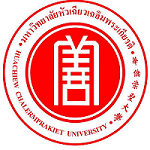กรุณาใช้ตัวระบุนี้เพื่ออ้างอิงหรือเชื่อมต่อรายการนี้:
https://has.hcu.ac.th/jspui/handle/123456789/4777| ชื่อเรื่อง: | อัตลักษณ์ของอาหารจีนแคะในย่านเยาวราช เขตสัมพันธวงศ์ กรุงเทพมหานคร |
| ชื่อเรื่องอื่นๆ: | Identities of Hakka Cuisine in China Town Yaowaraj Krung Thep Maha Nakhon |
| ผู้แต่ง/ผู้ร่วมงาน: | Chen Yanli พัชรินทร์ บูรณะกร Patcharin Buranakorn Huachiew Chalermprakiet University. Faculty of Liberal Arts. Graduate Student Huachiew Chalermprakiet University. Faculty of Liberal Arts |
| คำสำคัญ: | ฮากกา – ความเป็นอยู่และประเพณี Hakka (Chinese people) -- Social life and customs จีนแคะ อาหารจีน – ไทย – กรุงเทพฯ Chinese food – Thailand – Bangkok อัตลักษณ์ Identity (Philosophical concept) เยาวราช (สัมพันธวงศ์, กรุงเทพฯ) Yaowaraj (Samphanthawong, Bangkok) |
| วันที่เผยแพร่: | 2025 |
| บทคัดย่อ: | บทความนี้มีวัตถุประสงค์เพื่อศึกษาอัตลักษณ์ของอาหารจีนแคะในย่านเยาวราช เขตสัมพันธวงศ์ กรุงเทพมหานคร ซึ่งเป็นงานวิจัยเชิงคุณภพ โดยใช้วิธีเก็บข้อมูลจากเอกสาร การสังเกตการณ์ และการสัมภาษณ์ จำนวน 35 คน และนำเสนอ ผลการวิจัยแบบพรรณนาวิเคราะห์ จากผลการวิจัยพบว่า อัตลักษณ์ของอาหารจีนแคะมี 3 ประการ คือ 1) อัตลักษณ์ของอาหารจีนแคะในด้านวัตถุดิบ ได้แก่ ผักตากแห้ง อ้ายเฉ่า เต้าหู้ และด้านรสชาติ ได้แก่ กลิ่นหอมเหล้าแดง รสชาติมัน เค็ม ด้านเครื่องปรุง ได้แก่ เหล้าแดง ข้าวหมาก เต้าหู้มัก ด้านวิธีการปรุงอาหาร ได้แก่ การต้มเคี่ยวช้า ๆ การใช้สมุนไพร การดองอาหาร และความหมายแฝงในด้านอาหารจานเด่นและผัก 7 ชนิด 2) อัตลักษณ์ของอาหารจีนแคะจากมุมมองด้านพื้นที่ ในครอบครัวมีการทำอาหารแบบเรียบง่ายและชอบใช้สมุนไพร ในร้านอาหารทำอาหารแบบดั้งเดิมและมีอาหารจานเด่น ในร้านริมถนนทำก๋วยเตี๋ยวแคะและเย็นตาโฟเป็นหลัก 3) การสืบทอดและการเปลี่ยนแปลงอัตลักษณ์ของอาหารจีนแคะ มีการสืบทอดการปรุงอาหาร การปรุงวัตถุดิบ สูตรอาหาร สาเหตุที่มีการสืบทอด ได้แก่ การสร้างความผูกพันในครอบครัว ส่วนการเปลี่ยนแปลง ได้แก่ การลดน้ำมัน ลดเค็ม และมีการนำเข้าวัตถุดิบจากจีน และมีการเปลี่ยนวิธีการมาเป็นขายผ่านช่องทางออนไลน์ และสาเหตุที่ทำให้เกิดการเปลี่ยนแปลงนั้น เป็นเพราะว่าได้รับอิทธิพลจากสังคมไทย และการพัฒนาของเทคโนโลยีและการผสมผสานวัฒนธรรมอื่นๆ This article aimed to study the identities of Hakka cuisine in Chinatown Yaowaraj in Krung Thep Maha Nakhon. A qualitative research methodology was applied. Data was gathered through observation and interviews with thirty-five informants. Research findings were reported as a descriptive analysis. The research identified three identities of Hakka cuisine, as follows: The identity of materials and cooking techniques, which included raw materials such as dried vegetables, Ai Cao (艾草), and tofu; tastes like the aroma of red wine, oily and salty flavors; seasonings like red wine, fermented rice (Khao-mak), and fermented tofu; cooking techniques such as stewing, adding herbes and pickling; and the connotations of the seven main dishes and vegetables. The identity of areas, where household meals were characterized by herbal and simple dishes; restaurants served traditional dishes and main courses; and street food featured popular items like Hakka meatball noodles and red soup noodles. The preserved and changed identities, where cooking techniques, raw materials, and recipes were preserved due to a sense of family attachment. Meanwhile, the oily and salty tastes, some raw materials, and selling channels were changed because of influences from Thai society, new technologies like online selling, and integration with other cultures. |
| รายละเอียด: | การประชุมวิชาการระดับชาติ การวิจัยประยุกต์มหาวิทยาลัยนอร์ทกรุงเทพ ครั้งที่ 7 ประจำปี 2568 (National Conference in Applied Research-NCAR NBU) นวัตกรรมและปัญญาประดิษฐ์เพื่อสังคมแห่งการเรียนรู้ (Innovation and Artificial Intelligence for a Learning Society) วันศุกร์ที่ 28 มีนาคม 2568 ณ มหาวิทยาลัยนอร์ทกรุงเทพ วิทยาเขตรังสิต : หน้า 77-88. |
| URI: | https://has.hcu.ac.th/jspui/handle/123456789/4777 |
| ปรากฏในกลุ่มข้อมูล: | Liberal Arts - Proceeding Document |
แฟ้มในรายการข้อมูลนี้:
| แฟ้ม | รายละเอียด | ขนาด | รูปแบบ | |
|---|---|---|---|---|
| Identities-of-Hakka-Cuisine-in-China-Town-Yaowaraj-Krung-Thep-Maka-Nakhon.pdf | 1.4 MB | Adobe PDF | ดู/เปิด |
รายการทั้งหมดในระบบคิดีได้รับการคุ้มครองลิขสิทธิ์ มีการสงวนสิทธิ์เว้นแต่ที่ระบุไว้เป็นอื่น
